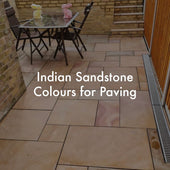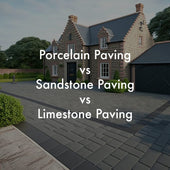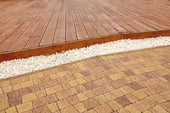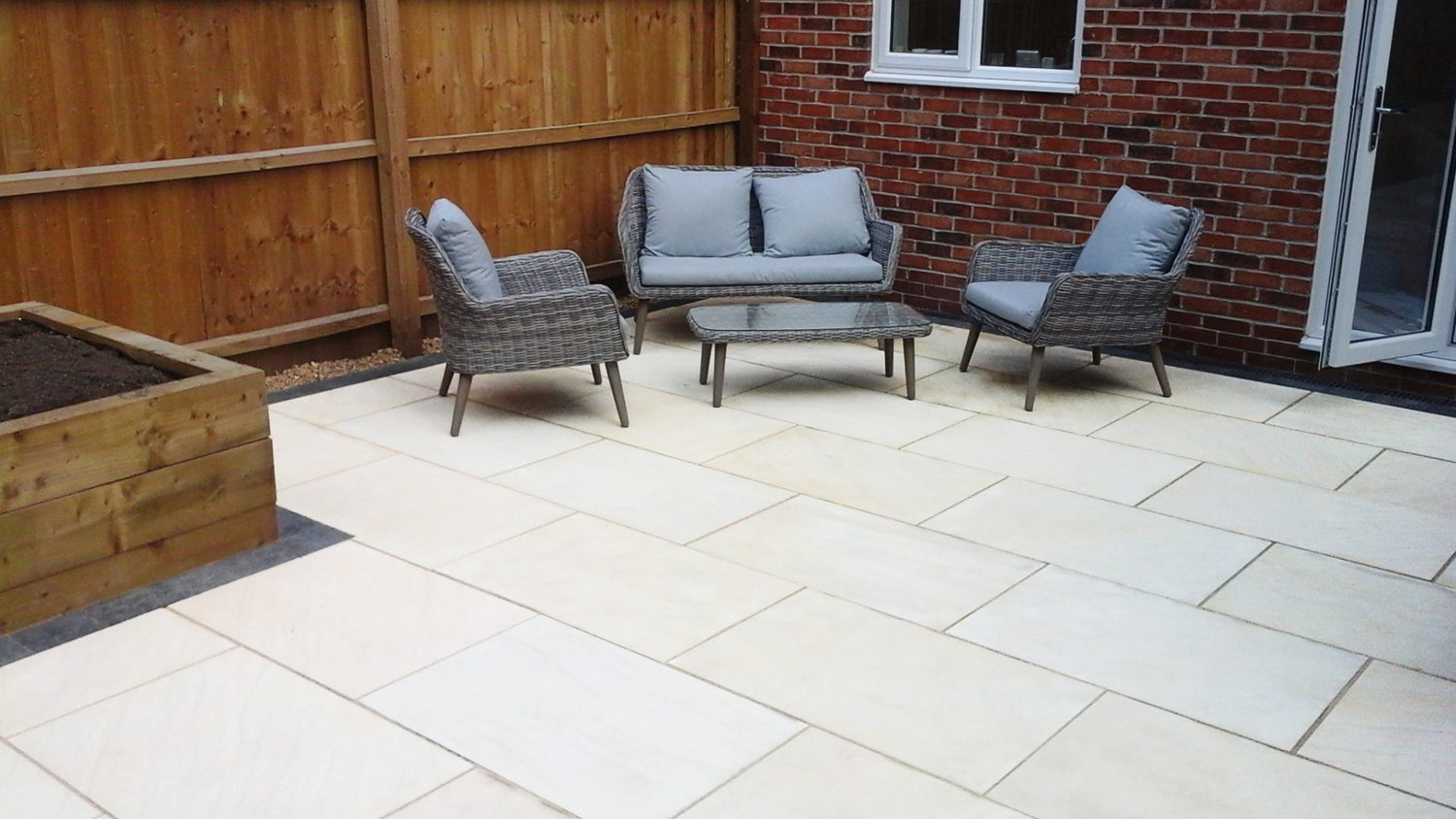
Why Do Paving Slabs Crack And How To Repair Them
Share

What Causes Paving Slabs To Crack In The First Place
Ground Settlement
The most common cause of cracks is ground settlement underneath the patio. If the sub-base under your paving was not compacted properly for your soil type, the ground will likely settle unevenly over time. This soil movement places stress on the paving structure, eventually causing visible cracks or raised edges as slabs tilt out of place. Clay and other expansive soils are most vulnerable to shifting and subsidence issues as moisture levels fluctuate dramatically between rains and droughts. But concrete or gravel bases can also settle and transfer cracks to the surface. A thicker sub-base minimises sinking risks over decades of use.Soil Shrinkage & Heave
Similarly, soils like heavy clay alternate between shrinking and expanding as they dry out or become saturated after storms. Cycles of extreme drought then heavy rain can make the ground underneath a patio rise and drop, lifting or settling paving slabs above. This inevitably strains slab joints until cracking damage appears - usually during summer or after winter freezes.Poor Installation Techniques
Laying paving without full mortar support also frequently causes later cracking. Dot-and-dab installs with just mortar dots or corners leave hollow areas for water to pool and freeze, weakening pavers over time. Fully bedding slabs across a concrete or 4:1 mortar base prevents these issues.How To Repair Cracked Paving
If your patio has cracks, all is not lost! Here are four practical solutions to restore your surface:1. Slab Resurfacing
Resurfacing covers cracks with fresh paving laid over the damaged layer beneath. But hairline cracks often continue growing until they mar the new surface too. Resurfacing alone rarely resolves uneven sinking or soil issues under the original slabs.2. Mudjacking
Mudjacking lifts sunken slabs by injecting mortar mixture to fill voids via holes drilled through the paving surface. It works well for concrete repairs but poses challenges on softer natural stones that can crack under pressure. And later soil settling can sink heavy mortar just like original slabs.3. Polymer Packing
For a lighter support approach, polymer packing pumps expanding polyurethane foam under slabs instead of concrete mortar. The foam lifts gently and leaves durable support that won’t contribute weight to re-sink patios. Polyurethane offers an excellent modern solution for raising concrete pads and preventing additional cracks long-term.4. Spot Slab Replacement
Replacing just a few damaged slabs keeps costs affordable. Simply lift the compromised pavers, rebuild the base layer properly with packed gravel and fresh concrete, then relay replacement slabs seamlessly anchored to stable surroundings.Prevention Is The Best Solution
No patio lasts indefinitely. But quality materials made for local conditions, installed properly atop a well-graded base of adequate thickness, will make paving withstand decades rather than just years of family use before cracks appear. Pay careful attention to drainage and moisture levels around the perimeter too - allowing the underlying soil to alternate between bone dry and saturated greatly accelerates shifting and damage. With a quality foundation and mindful care, beautiful paving can last 50 years or more before major overhaul. Don't let a few cracks spell complete disaster - timely repairs keep patio problems minor."As a professional landscaper, proper base preparation is absolutely crucial. Compacting gravel and precision grading prevent 90% of paving slab cracks down the road. If issues do arise later on, targeted mudjacking or replacing single slabs saves big money compared to fully reinstalling an entire patio." - Steven Bell, Paving Shopper Landscapes
Do porcelain patio slabs crack easily?
When properly installed on a stable base, porcelain pavers are very durable and no more prone to cracking than concrete or natural stone alternatives. Their dense composition makes porcelain patio tiles quite resilient against cracks.Why do my sandstone patio slabs keep cracking?
Sandstone is prone to cracking from ground settlement issues because it has naturally occurring cracks and fissures. Freezing conditions readily infiltrate its porous surface and undermine sandstone’s structural integrity from below over time. Preventing extensive cracks requires installing sandstone on an exceptionally stable, thick base.Can freezing weather cause cracks in limestone paving?
Absolutely. Like sandstone, limestone contains tiny natural pores that allow water to penetrate the material. When this moisture freezes and expands inside limestone, unseen cracks start forming. Over many winter freeze/thaw cycles, visible cracks, pits, and flakes begin marring the surface.Do porcelain patio slabs crack when frozen?
No, porcelain patio pavers do not readily crack from winter freeze/thaw issues since they have an exceptionally dense, non-porous composition. Water cannot easily penetrate into porcelain to expand, form cracks and undermine its sturdy surface integrity over time as it does more porous materials. Installing porcelain on a good patio sub-base can help prevent issues with cracking.Why is sandstone prone to worse cracking from ground freezing?
Sandstone contains abundant tiny natural pores and cracks which allow ground moisture easy access inside the stone. When this water freezes and swells up within sandstone slabs over winter, invisible cracks steadily grow. After years of exposure, visible cracks, pits, and surface flakes develop from the cumulative freeze damage.Can extensive moisture exposure and freezing weather eventually crack through limestone?
Yes. Like sandstone, the natural pores and microscopic cracks in limestone give external water sources multiple access points to infiltrate the material. Each winter when this moisture freezes and expands below the surface, more microscopic fractures form. Over time, accumulating freeze fractures create visible surface cracks and degrade the integrity of limestone paving.What makes porcelain paving exceptionally resistant to winter cracking?
Porcelain’s incredibly dense, near-porous structure leaves water no pores or cracks to ingress through. With no moisture penetration, freezing temperatures cannot expand ice within the material and leverage this immense internal pressure to steadily split porcelain from the inside out each winter. This unique composition makes porcelain highly impervious to freeze-thaw damage.Does paving crack in winter?
No paving should crack in winter. Paving is resistant to winter temperatures, however, care should be taken when laying paving in winter.Related Posts
-

UK Garden Statistics and Trends 2024
UK Garden Statistics and Trends 2024 General UK Garden Statistics The vast majority of UK households have access to ...
-

Can I lay Paving on Soil or Mud?
Technically, yes – you can lay paving stones or slabs directly onto exposed topsoil however, laying a sub-base will e...
-

How Much Does a New Patio Cost?
A new patio in the UK typically costs between £80-£150 per square meter. For a 40-50 sqm patio, expect to pay £2,000-...
-

What Different Sizes Do Paving Slabs Come In?
When planning a patio or outdoor paving project, one of the key decisions is choosing the right size paving slabs. ...
-

Can You Pressure Wash Indian Sandstone?
Indian sandstone is a popular choice for outdoor paving due to its durability and attractive appearance. However, li...
-

Is Sandstone Paving Permeable? Is it porous?
Sandstone's porous nature enables it to absorb rainfall, qualifying it as a permeable paving variety. However, seali...
-

Where Does Natural Sandstone Paving Come From?
Sandstone begins deep underground, formed over eras as minerals and sediments fused under pressure. Powerful forces ...
-

5 Paving Ideas for Small Gardens: Maximise Your Outdoor Space
Front of House When considering paving ideas for the front of your house, it's crucial to select ones that complem...
-

9 Paving Ideas for Front of House: Enhancing Curb Appeal with Style
The facade of a house plays a pivotal role in defining its character and curb appeal, and the choice of paving can s...
-

9 Summer Garden Paving Ideas UK
Summer gardens offer a vibrant canvas for homeowners to express their style while enhancing outdoor living spaces. G...
-

8 Garden Paving Ideas for 2024
It's time to refresh your garden's look for 2024 and an easy way to do that is with some new paving. With so many opt...
-

How to remove moss from patio paving
Moss growth is a common issue for patio paving, especially in damp, shaded areas. While moss may seem harmless, it ca...
-

How much does sandstone paving cost?
When choosing new garden pavers, sandstone offers homeowners an enticing middle-ground - more durable than basic conc...
-

How to lay paving in winter (Tips & Tricks)
How Cold Temperatures Impact Paving Projects The primary concern when working in cold weather is ensuring proper curi...
-

Sub Bases For Patios
Building the Perfect Patio Base: A Comprehensive Guide When planning an outdoor living space, understanding proper ba...
-

Pros and Cons of Porcelain Paving
Are you considering adding porcelain paving to your outdoor space? It's important to weigh the pros and cons before ...
-

Understanding Paving Slip Ratings: A Comprehensive Guide
A paving slip rating, also known as a slip resistance or anti-slip rating, is a measure of how slippery a surface...
-

Stunning Garden Water Feature Ideas - Enhance Your Outdoor Space
Garden water features are decorative elements that incorporate water into a garden, adding beauty and a sense of ...
-

How to Stop Weeds in Block Paving: Expert Tips andTricks
Weeds growing between the blocks of your paving can be an unsightly and frustrating problem. Not only do they make y...
-

How to clean paving without a pressure washer
A patio cleaner is a cleaning solution designed specifically for removing dirt, grime, and stains from outdoor patio...
-

How to Grout Paving Slabs – Expert Tips and Techniques
Pointing paving slabs is an important step in the process of installing them. Grout is a mixture of cement, water...
-

Block Paving Guide | What Does it Cost? | How Much Per m2?
Block paving is a versatile and durable option for creating driveways, patios, and paths. This method involves using...
-

Porcelain VS Ceramic Paving
Porcelain paving is non-porous and more durable than ceramic paving, which is more porous and prone to stains and wea...
-

Sandstone V Porcelain Paving - (Style Comparison and Distinctions)
When choosing materials for your patio or driveway, two of the most popular options are sandstone paving slabs and p...
-

Understanding Gradients and Falls for Paving and Drainage (2024)
When it comes to paving and drainage projects, understanding the correct gradients and falls is essential for ensuri...
-

Indian Sandstone Paving Colours for A Patio - A Comprehensive Guide
Indian sandstone is one of the most popular paving materials, celebrated for its natural beauty and the variety of co...
-

Jointing and Pointing For Paving (Sand & Cement Mix)
Patio pointing is important for both looks and durability. It protects the layers under your paving, stops weeds, and...
-

How to Lay Paving on Sand and Cement: Expert Advice and Tips
Paving on Sand and Cement: A Comprehensive Guide When it comes to enhancing your outdoor space, paving is a popular ...
-

Pros and Cons of Sandstone Paving
Pros & Cons of Indian Sandstone Paving Indian sandstone paving is a natural and durable option that adds both bea...
-
Does Patio Paving Need Edging? A Comprehensive Guide
In this article, we'll explore the importance of patio edging, the different types of edging materials available, and...
-

Pet Friendly Paving - What is the best paving for a dog-friendly garden?
Creating a dog-friendly garden requires choosing the right paving materials to ensure your furry friends can enjoy t...
-

Patio Paving Laying Patterns Guide
Paving patterns can transform an ordinary outdoor space into a stunning and eye-catching area that complements your ...
-

Patio Kits vs Single Size Paving Slabs: Which To Choose?
When designing a patio or outdoor space, one crucial decision is whether to use a patio kit (also known as patio pack...
-

Are paving slabs suitable for driveways?
This is a question many homeowners ask when it comes to choosing the right type of driveway surface for their home. T...
-

How much paving do you need to cover your outdoor space?
Planning an outdoor paving project is exciting, but it’s crucial to accurately estimate the amount of paving needed b...
-

What is the Best Paving for Patios?
When it comes to choosing the best paving for patios, there are a variety of factors to consider, such as durability,...
-

Sandstone v Limestone v Porcelain: The Pros and Cons of Different Garden Paving Materials
Transforming your outdoor space involves choosing the right paving material, and porcelain and sandstone are two of t...
-

Are Paving Slabs Cheaper Than Decking?
Transforming your backyard into the ultimate outdoor oasis can be challenging when choosing between paving slabs or d...
-

How to lay a patio - An expert guide to laying paving slabs and patterns
There are a few things to consider before laying a patio, such as the type of paving stones and the laying pattern. Y...
-

How to cut Sandstone Paving?
When it comes to prepping your garden for a new patio, you may consider different designs that require your paving to...












































